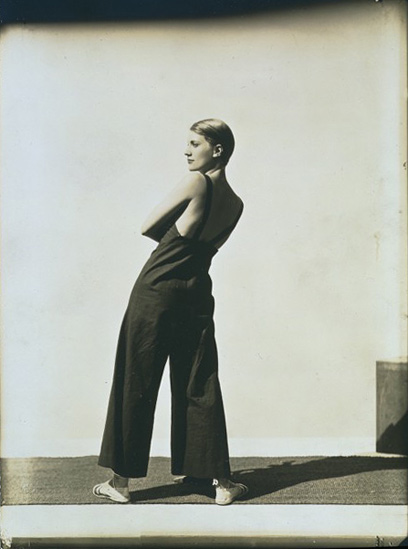Hey all,
So today i was getting extra excited and looked at my courses i will be taking, for the 100th time. Here's a sum up if you're interested:
ITALIAN LANGUAGE LEVEL ONE:
Italian Language Level One is a course for students who have never studied the language before. The main goal of the course is to give a basic knowledge of the Italian language through the development of listening, speaking, reading and writing skills.
CROSSCULTURAL COMMUNICATIONS/CROSSCULTURAL PERSPECTIVES:
Living in Siena offers you two important learning experiences. The first (more obvious) one concerns Italian life and culture, specifically as it is lived out around you in Siena day by day. What is important to people here? What patterns are woven into their lives? What about their history, their hopes, their daily dilemmas? The second learning opportunity involves coming to understand the cultural baggage that you have (inevitably) brought with you to Siena and the implicit assumptions that you use in understanding Sienese life. The juncture of these two learning experiences is the focus of this course. Class activities include films, local fieldtrips, small group tasks, guest speakers, role plays, opportunities to meet Italian students, and cultural interpretation by the instructor. Learn how contrada membership shapes social interactions and opportunities for Sienese people, lifestage by lifestage. (Short video on the Palio). Visit to CASTELLO DI BROLIO and wine tasting at FATTORIA di BROLIO (Half day excursion).
o my gosh. wine tasting. cannot wait. I am living in the Chianti region!
PICTURING PEOPLE – ITALIAN ART AND SOCIETY DURING THE RENAISSANCE:
Explore Italian art during the Renaissance. Examine the way Italian culture & society is reflected in the works of the artists of the day.
Visit to the Santa Maria della Scala Museum.
i really hope i get to go to Florence many many times over. Florence's art alone I feel like i could get lost in for eternity. And "The David". Hot.
FOOD AND CULTURE IN ITALY:
Food! What could be more basic to life than food? Food is the hub from which the complexities of culture can be studied. A marriage banquet, religious ceremonies, national and regional holidays, coffee breaks, a dinner with friends, all of these are examples of events in which food is the focus of meaning and groups gathering together. For humans, eating is not a simple biological act; food and nutritional status are influenced by the environment, social traditions, religious beliefs, gender roles, status and aesthetics, among other factors. Consequently a large part of the course menu is devoted to analyses of the social, environmental, and symbolic aspects of food and culture in Italy. Many excursions are relevant to this topic and as indicated above it would be ideal to teach this course in conjunction with a cooking class or a series of cooking lessons. The most appropriate excursions to amplify the course material will be to local markets, small shops, restaurants and factories which abound in the region. It will be very appropriate to make similar trips to other areas in the country in order to compare availability of food items, local food systems and eating practices. It would also be appropriate to include trips which would provide a rural-urban contrast in food patterns, market systems and possibly restaurant styles. Agricultural settings: Vineyards, farms and orchards. The surrounding countryside will provide ample choices for excursions and walks which can be used to experience the variety of micro habitats that have been transformed by humans. Chianti, for example, is a region in which the landscape has been sculpted by history of agricultural change as well as social transformation.
I will encourage students to explore local food ways as much as possible and they will be required to maintain a Food Journal throughout the quarter. This journal will serve not only as a means of recording their own personal food practices away from their customary eating domain, but it will also serve as an ethnographic tool for recording their observation of local diet and food ways. Siena is famous for a variety of pastries/ sweets and different types of bread distinguish
different regions as well as provide urban/rural and social class contrasts.
B. It would be ideal if students were able to experience some local celebrations. The choices will depend on the season in which the class is taught and the practicality of attending. The following is a brief list to provide some idea of possibilities: Santippolito Di Vernio - (March): chestnut-flour polenta and spaghetti, Easter Celebrations (April).
The National Museum of Pasta – weekend excursion Located in Rome, this museum focuses on different stages of pasta making.
Anyone who knows me and my family knows that we are obsessed with good food. We love food. I love food. Honestly, sometimes i get worried i will come home 200 lbs. heavier and earlier than expected because I will have eaten soooo much food and will have spent all my money on it! Hopefully i will be able to indulge moderately? wow. Hardcore Oxymoron there... Haha. Because that's possible!
The cooking classes that coincide w/ this seem like a fabulous idea. Also, Siena has open air markets on the weekdays that I hear kids skip class over. Fresh produce! The highlight for me seems to be the visit to the Roman Pasta Factory. :)))) i am salvating right now.

hey savy, this is Mrs. G... You are in Italy..and believe it or not, the people will sound Italian!! lol... and Happy birthday to you..big 21!! Only thing is , you could have been drinking at 5 in Italy!!! You make me laugh... I know it will be an adventure of a life time and i wish you nothing but the best of everything in all you do while there... watch out for those Italian guys...they pinch you and i mean pinch YOU!! You can fall in love real easy in italy>> take care...Love Kitty..
ReplyDelete